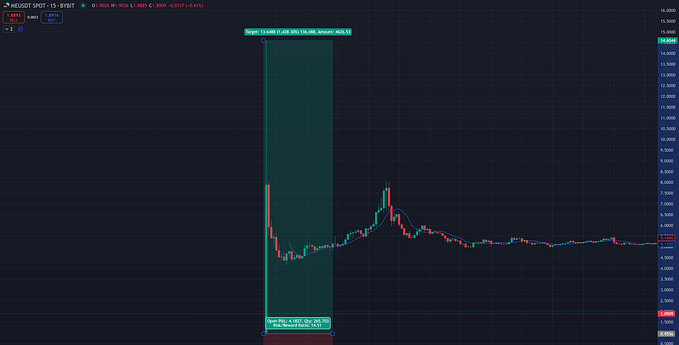Gold Mining and Environmental Sustainability: Balancing the Scales

Gold mining is a global industry that has significantly shaped economies and societies. As one of the most sought-after commodities, gold has been mined for centuries. However, the environmental impact of gold mining has raised concerns about sustainability and the need to balance economic benefits with responsible practices. In this comprehensive exploration of the subject, we will delve into various aspects of gold mining and its environmental sustainability, while also keeping an eye on SEO best practices.
Gold Mining Processes: Unveiling the Stages
Understanding the environmental implications of gold mining requires dissecting the process. Gold mining encompasses several key stages, each of which presents unique challenges:
1. Exploration
The initial exploration phase involves searching for gold deposits. However, this process can lead to habitat disruption, the clearing of vegetation, and other activities that negatively impact local ecosystems.
2. Extraction
The extraction of gold involves multiple techniques, some of which have severe environmental consequences. Traditional methods often employ toxic chemicals such as mercury and cyanide, leading to water pollution and posing health risks to nearby communities.
3. Processing
Processing gold ore is another stage notorious for its environmental impact. This process releases airborne pollutants and generates vast amounts of waste, frequently stored in tailings dams, which can pose significant environmental threats.
The Environmental Impact: A Closer Look
The environmental footprint of gold mining extends far and wide, encompassing various facets:
1. Water Pollution
Mining operations are known to contaminate water sources with heavy metals and chemicals. Among these, cyanide stands out for its notoriety and toxicity, causing lasting damage to ecosystems.
2. Deforestation
The mining industry’s appetite for space and resources often results in deforestation and habitat destruction. These activities not only harm local wildlife but also contribute to climate change through reduced carbon sequestration.
3. Land Degradation
Gold mining leaves landscapes altered, scarred, and degraded. The quality and fertility of the soil are severely affected, making it challenging to restore these areas to their natural state.
4. Greenhouse Gas Emissions
The energy-intensive processes involved in gold mining contribute significantly to greenhouse gas emissions, making it a significant factor in global warming.
Sustainable Practices in Gold Mining: Charting the Path Forward
Mitigating the environmental impact of gold mining has become an industry imperative. A shift towards sustainability is evident in several areas:
1. Cleaner Technologies
The development and adoption of cleaner and more efficient technologies play a pivotal role in reducing the environmental impact of gold extraction. These innovations aim to minimize emissions, chemical usage, and energy consumption.
2. Land Reclamation
Responsible mining operations now include plans for land reclamation and rehabilitation after the cessation of mining activities. These efforts focus on restoring the land to a condition resembling its natural state.
3. Certifications and Ethical Standards
The introduction of industry standards like the Responsible Gold Mining Principles reflects the sector’s commitment to ethical and sustainable practices. These certifications promote responsible environmental and social conduct in gold mining.
Click here for more investment tips
Case Studies: Success Stories in Sustainable Mining
While challenges remain, there are examples of gold mining operations that have successfully implemented sustainable practices. These mines have made notable progress in various aspects:
1. Water Pollution Mitigation
Some mining operations have invested in advanced water treatment facilities. These facilities effectively remove contaminants from wastewater before it is released into the environment, significantly reducing water pollution.
2. Reforestation Initiatives
In response to the deforestation caused by mining, initiatives are underway to replant trees and restore habitats. These projects help to undo some of the ecological damage and promote biodiversity.
3. Community Engagement
Collaboration with local communities and environmental organizations is becoming a standard practice in the mining industry. These collaborations help balance economic development with ecological protection and community well-being.
Government Regulations and Policies: The Role of Authorities
Government bodies play a pivotal role in regulating and monitoring mining activities. While regulations vary by country, some nations have strict environmental policies in place to ensure responsible and sustainable mining practices.
Community Engagement: A Vital Component of Sustainability
Engaging with local communities is crucial for achieving environmental sustainability in mining. Responsible mining can bring significant social and economic benefits to these communities, creating a win-win scenario that fosters cooperation and support.
Challenges and Future Directions: A Roadmap to Sustainability
The road to full environmental sustainability in gold mining is complex, but emerging technologies and innovations offer hope for further reducing the industry’s environmental footprint. Research and development remain critical for making mining more sustainable.
Conclusion: The Way Forward
The environmental impact of gold mining is a pressing concern, but the industry is actively working toward more responsible practices. The need to balance economic benefits with environmental sustainability is evident. Responsible mining, government regulations, and community involvement are vital for preserving ecosystems, protecting the planet, and ensuring a sustainable future for gold mining.
This detailed exploration of gold mining and its environmental sustainability highlights the challenges, achievements, and future prospects of this industry. Balancing the economic importance of gold with the imperative of protecting the environment is a task that demands the collaboration of governments, mining companies, and local communities. By adopting cleaner technologies, responsible mining practices, and rigorous certifications, the gold mining industry is charting a more sustainable course for the future.










